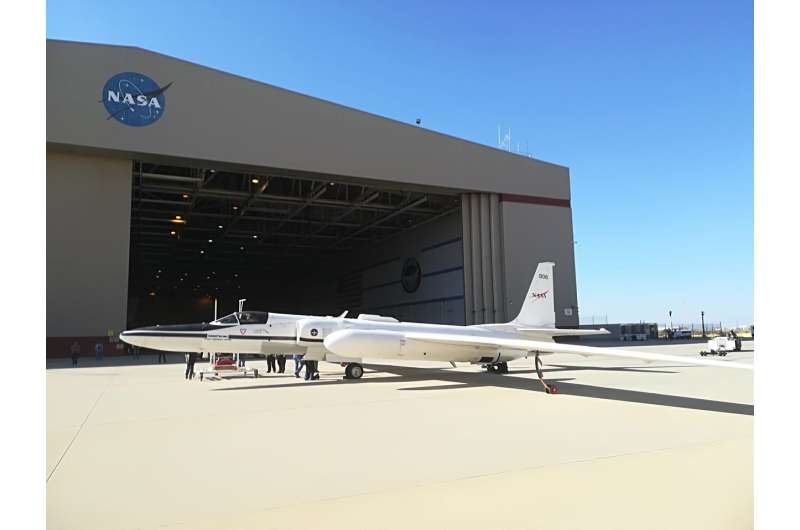SPEX project gets wings: first measurements SPEX airborne published

Researchers from SRON Netherlands Institute for Space Research have published the first results of SPEX airborne, a spectrocalorimeter to measure aerosols. The polarization measurements aboard NASA's research aircraft ER2 have proven to be accurate beyond expectations, with an average maximum deviation of 0.5 percent from reference data. The results are published in Applied Optics.
This is an important result, because the space version of the spectrocalorimeter—SPEXone—will have to perform flawlessly in 2022 on the NASA PACE space mission. The SPEX concept is also a contender to be part of the future European CO2 space mission.
Unknown variable
Aerosols are known to have a strong influence on the climate. Large amounts of desert sand in the atmosphere leads to cooling because sunlight is reflected back into space. But aerosols can also have a warming effect. Whether they have a cooling or warming effect depends on their microphysical properties. It is important to determine these properties as accurately as possible. In addition, aerosols can interfere with measurements from space, such as those from the PACE mission on ocean color and composition of greenhouse gases.
Atmospheric researchers need new instruments to get a better grip on uncertainties due to aerosols. Researcher Otto Hasekamp from SRON Netherlands Institute for Space Research took the initiative for a mission sending several aerosol instruments on a NASA research aircraft, which took place at the end of 2017. During the so-called ACEPOL campaign, scientists from different groups were able to calibrate and compare their instruments. SPEX airborne was one of these instruments.
Polarization and spectrum
SPEX airborne takes aerial measurements from nine fixed viewing angles and collects a spectral image of the reflected sunlight, including the degree of polarization. The ACEPOL campaign also includes American polarimeters: Air Multiangle Spectro-Polarimetric Imager (AirMSPI), Research Scanning Polarimeter (RSP), Cloud Physics Lidar (CPL) and High Spectral Resolution Lidar (HSRL). This provided the opportunity to compare SPEX airborne measurements to similar data in order to get an impression of the quality.
SRON researcher Martijn Smit says, "Compared to NASA's RSP instrument, which has demonstrated accuracy thanks to many flight hours, the measurements of SPEX airborne deviates on average by a maximum of 0.5 percent. That exceeds our expectations, so we are very happy about that." The ACEPOL campaign also shows that SPEX functions stably as a system. The first results of the campaign have been published in Applied Optics.
SPEXone
Using the calibration data and the data comparisons from the ACEPOL campaign, atmospheric researchers can create models that will provide meaning to future SPEXone observations. This allows them to draw conclusions on aerosols, including on the amount, the average size, whether they reflect or absorb radiation and whether they are spherical or elliptical.
More information: J. Martijn Smit et al. SPEX airborne spectropolarimeter calibration and performance, Applied Optics (2019). DOI: 10.1364/AO.58.005695
Provided by SRON Netherlands Institute for Space Research




















